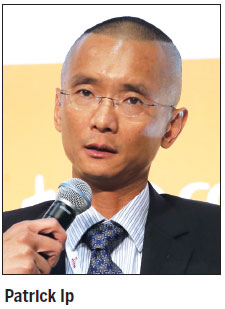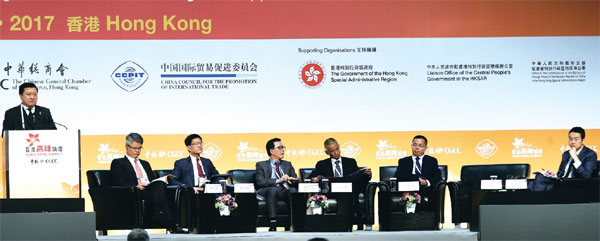CAF takes the lead in ASEAN thrust
Updated: 2017-07-12 07:30
By Evelyn Yu in Hong Kong(HK Edition)
|
|||||||||
Making its first investment in the ASEAN (Association of Southeast Asian Nations) member states in 2010, quasi-sovereign equity fund China-ASEAN Investment Cooperation Fund (CAF) has taken the lead under the China-led Belt and Road (B&R) Initiative, striking a balance between profit-making and promoting infrastructure development in the 10-member regional grouping.
The first tranche of CAF's $1-billion investment pool has been plowed into 10 ASEAN projects that are mainly engaged in infrastructure, energy and natural resources.
"We've been investing in the Philippines' largest shipping and logistics company, the largest port in Thailand and the largest telecommunication infrastructure providers in Cambodia and Myanmar. We've also invested in the fast growing healthcare sector in Singapore," CAF Managing Director Patrick Ip told the Hong Kong Summit forum on Tuesday.
|
Kriengsak Chareonwongsak (left) urges governments in the region to strive for trade openness. |
He said there are great investment opportunities in the ASEAN countries, given the asymmetry between its strong growth and the huge investment gap.
Citing figures from the Asian Development Bank, Ip said infrastructure in Asia requires an annual spending of about $1.7 trillion. He estimated that governments can contribute 20 percent of the funds required, while the private sector can pump in 10 percent. The investment gap infrastructure is huge, he noted.
CAF, sponsored by the Chinese mainland's Export-Import Bank of China, is currently fundraising for the second tranche, and the exercise is expected to be completed in the fourth quarter of this year, with a target of raising $1 billion to $3 billion.
The US dollar-denominated offshore fund has seen six of its 10 investment projects successfully exited, recording a double-digit returns rate.

According to Ip, an initial public offering is not their first choice under the exiting strategy, "Take the Philippines as an example, the daily transaction volume of their stock exchange is around $200 million - just a fraction of that of the Hong Kong stock market," he said, adding that it's difficult for investee companies to go public.
However, Ip stressed that pursuing high returns is not their ultimate goal, and their investment philosophy is to help potential companies grow.
When CAF invested in the Philippines' largest shipping and logistics company several years ago, the earnings before interest, tax, depreciation and amortization (EBITDA) was low, but the figure has improved significantly in recent years, Ip said. Apart from providing financing, the fund also assisted the Philippine company to improve and grow as part of its value-added post investment strategy.
Compared to other funds, Ip said CAF is more risk-averse. The gesture of investing in investee companies serves as credit enhancement which gives them more leverage in further fund-raising. The fund can also help them tap into the mainland market with the fund's extensive resources - perks that other funds might not have.
After a seven-year thrust into ASEAN, Ip said risks like geopolitical disputes could impose challenges for Chinese mainland investors. He's glad to see that strategic projects like the B&R Initiative can largely mitigate tension. Building trust between China and ASEAN countries is important for Chinese investment, he said.
evelynyu@chinadailyhk.com
(HK Edition 07/12/2017 page17)
